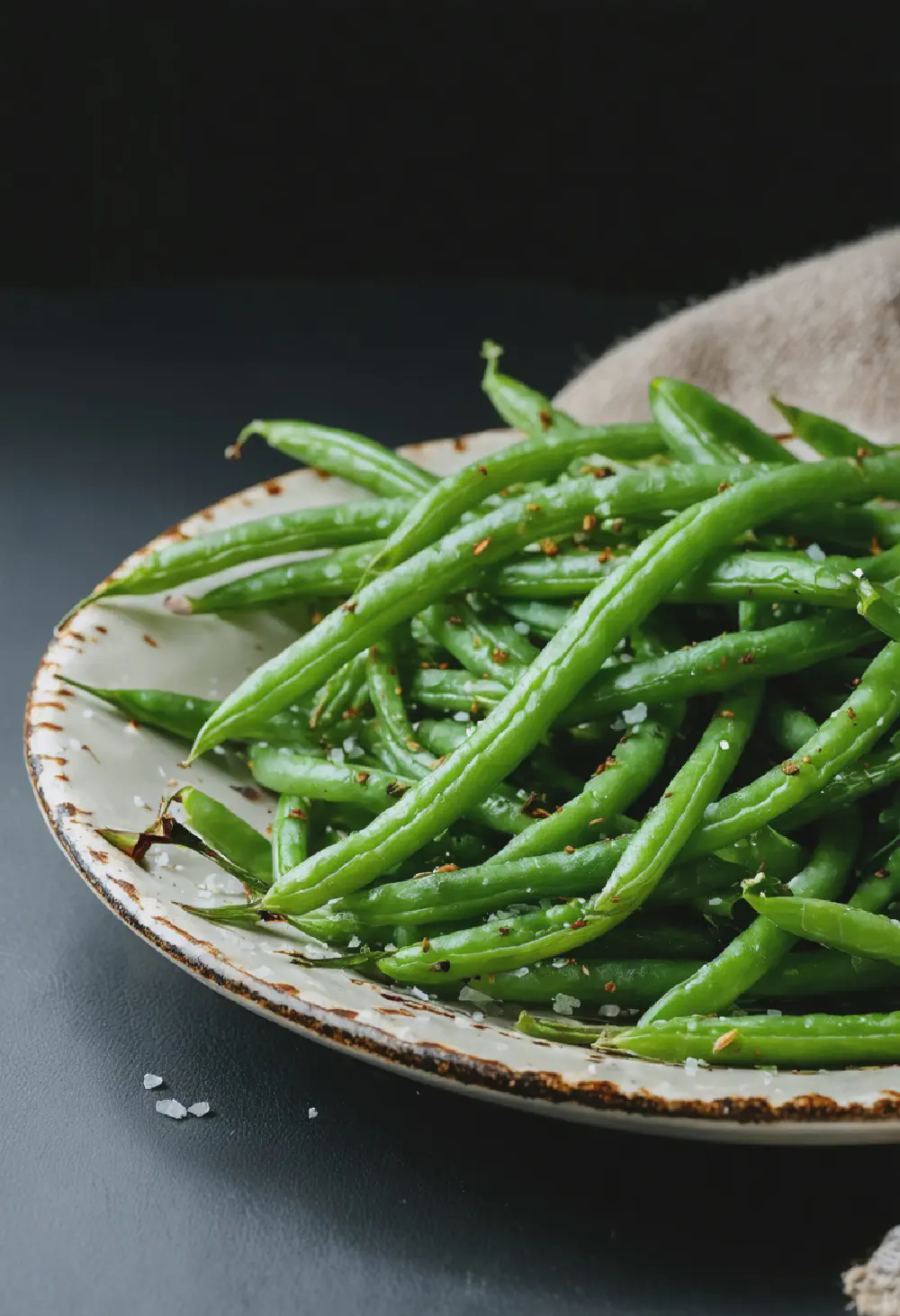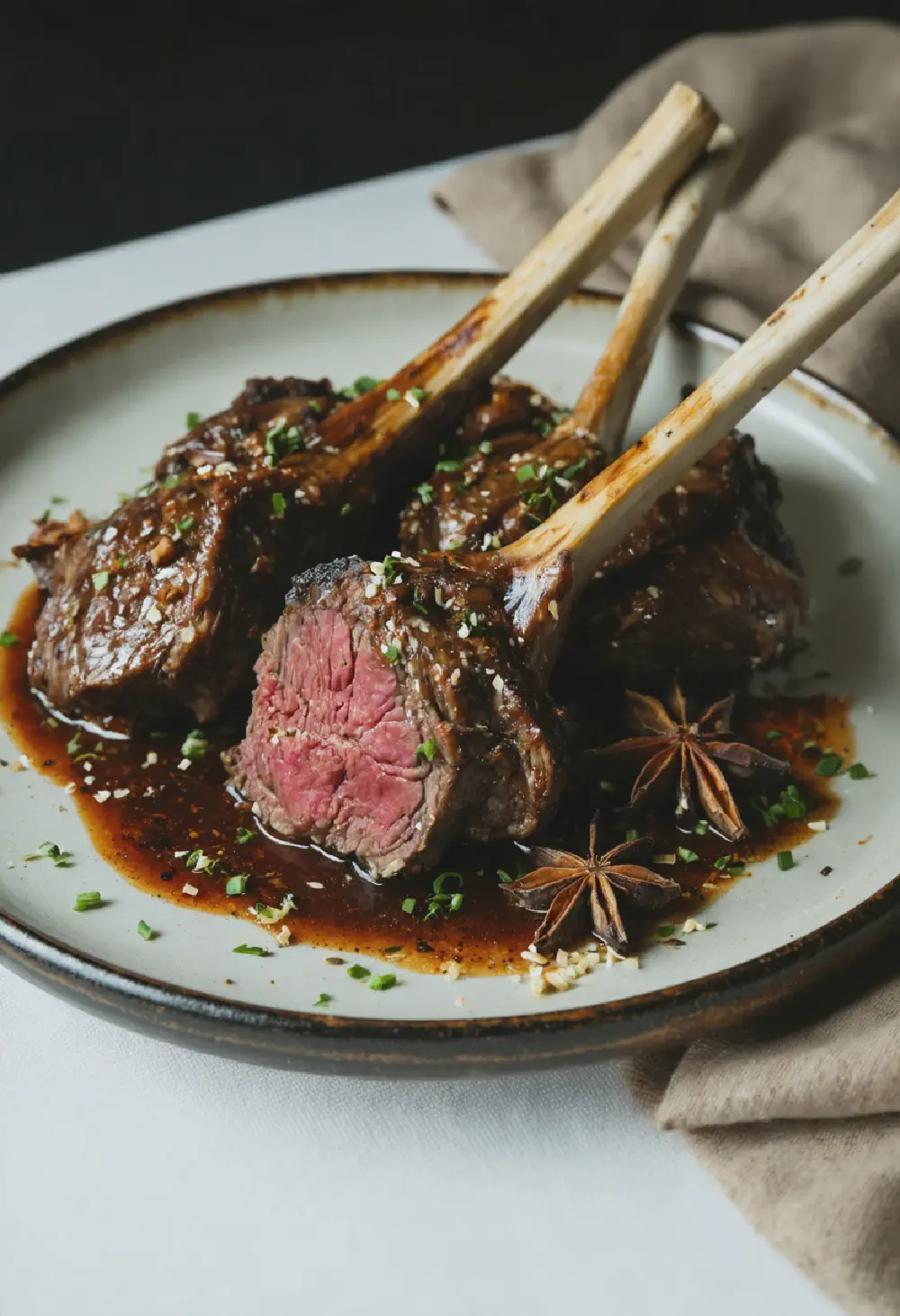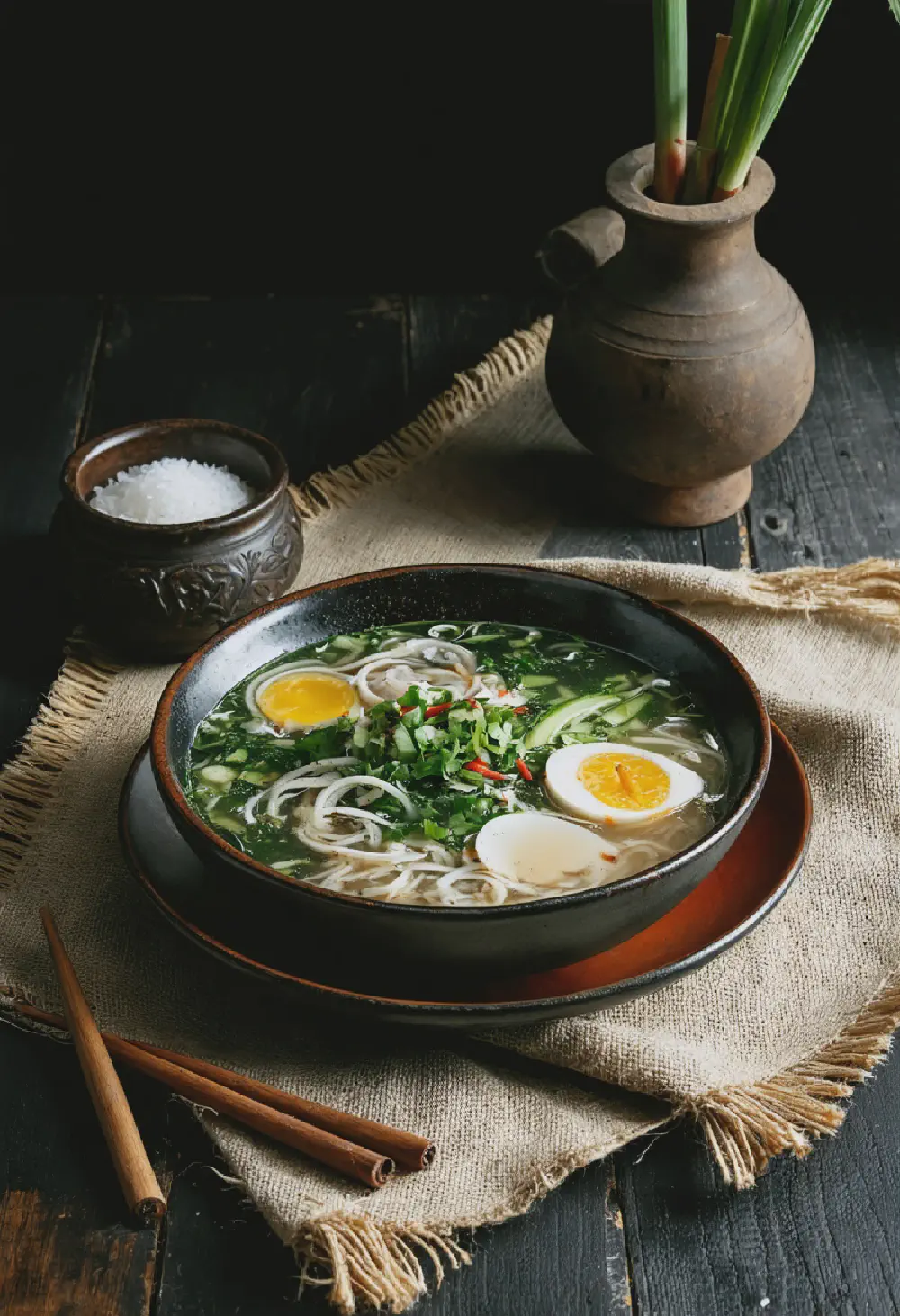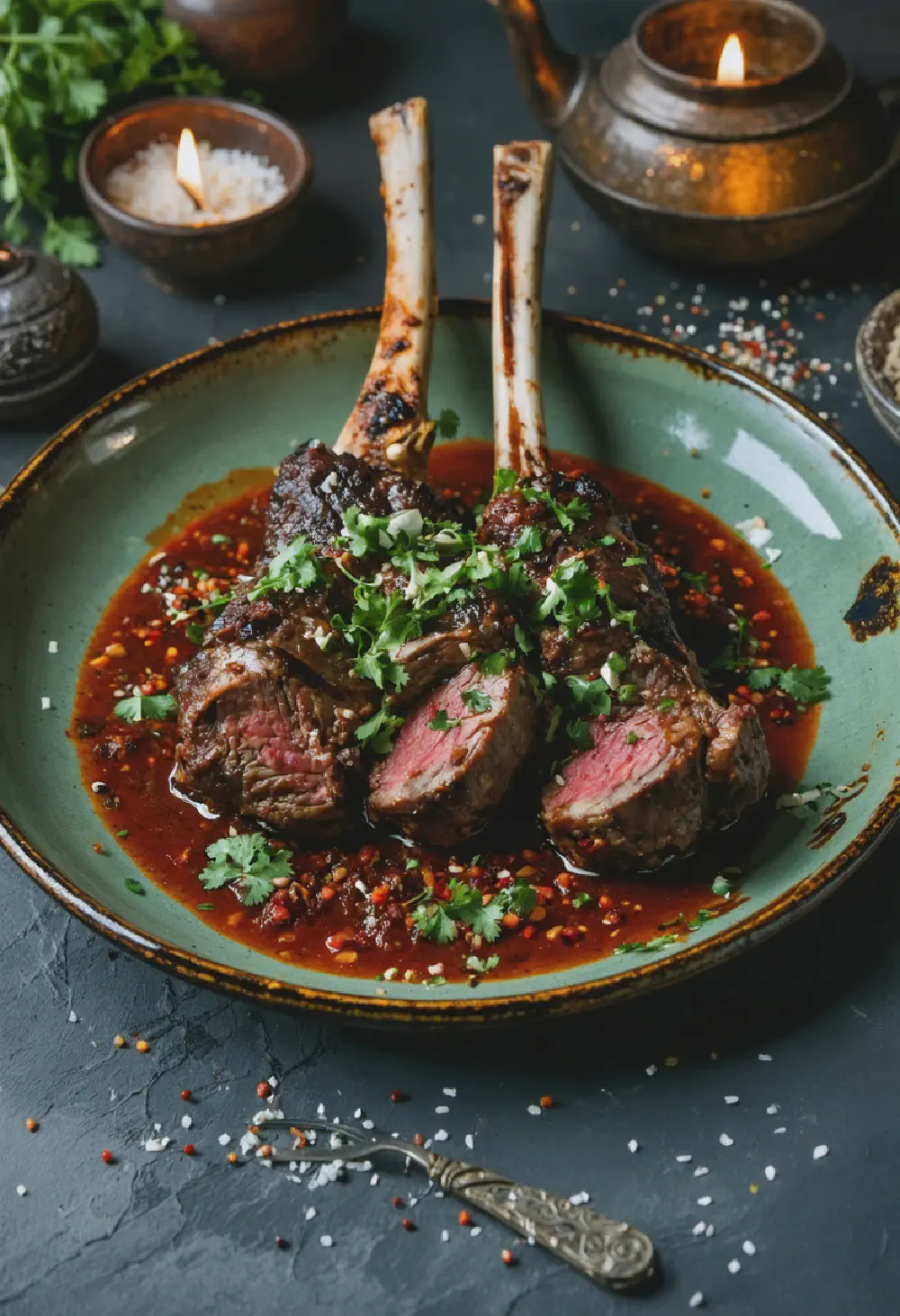Garlic String Beans
10M
20M
- Makes 4 servings
- 1 pound fresh string beans, ends trimmed
- 2 tablespoons vegetable oil
- 4 cloves garlic, minced
- 1 tablespoon soy sauce
- 1 teaspoon sesame oil
- 1/2 teaspoon sugar
- Salt to taste
- Wash the string beans thoroughly and trim the ends. Blanch the beans in boiling water for about 2 minutes until they are bright green and slightly tender. Drain and set aside.
- Heat the vegetable oil in a wok or large skillet over medium-high heat. Add the minced garlic and stir-fry for about 30 seconds until fragrant but not browned.
- Add the blanched string beans to the wok. Stir-fry for about 3-4 minutes until the beans are slightly charred and tender.
- In a small bowl, mix together the soy sauce, sesame oil, and sugar. Pour this mixture over the string beans and continue to stir-fry for another 1-2 minutes until the beans are well coated.
- Season with salt to taste. Serve hot as a delicious side dish.
Garlic String Beans: A Traditional Chinese Delight
History
Garlic String Beans, known as “蒜蓉四季豆” in Chinese, have a rich history rooted in the culinary traditions of China. This dish originated in the Sichuan province, where the use of garlic and stir-frying techniques are prevalent. The simplicity of the dish, combined with its flavorful outcome, made it a staple in Chinese households and restaurants. Over time, Garlic String Beans have become a beloved dish not only in China but also around the world, appreciated for its ease of preparation and delicious taste.
Taste Profile
The taste profile of Garlic String Beans is a harmonious blend of flavors and textures. The crispiness of the string beans provides a satisfying crunch, while the garlic adds a pungent and aromatic depth to the dish. The stir-frying technique ensures that the beans retain their vibrant green color and freshness, while also allowing the garlic to infuse its flavor throughout. The balance of saltiness and the subtle hint of oil used in the stir-fry create a mouthwatering experience that is both light and satisfying.
Cultural Significance
In Chinese cuisine, Garlic String Beans hold a special place due to their representation of the balance between simplicity and flavor. The dish embodies the principles of Chinese cooking, which emphasize the use of fresh ingredients and minimalistic yet impactful seasoning. It is often served as a side dish during family meals and festive occasions, symbolizing prosperity and health. The use of garlic, a staple in Chinese cooking, also reflects the cultural belief in its health benefits, making Garlic String Beans not just a culinary delight but also a nod to traditional Chinese medicinal practices.
By exploring the history, taste profile, and cultural significance of Garlic String Beans, one can appreciate the depth and richness this traditional Chinese dish brings to the table.



















